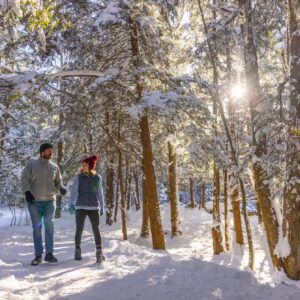Take a Glimpse into the Past at West Virginia’s Historic State Parks
Published: October 14, 2016West Virginia State Parks are known for their breathtaking views and outdoor recreation, but did you know many of our parks have rich historical significance as well? Plan your family’s fall educational adventure by visiting one of these featured parks!
Blennerhassett Island Historical State Park
Blennerhassett Island is located along the Ohio River, about two miles below Parkersburg. The idyllic setting was once the scene of high culture and high crime on the edge of America’s frontier.

- Visit the Blennerhassett Museum in Parkersburg to get acquainted with aristocrats Harmon and Margaret Blennerhassett and learn about how they lost their home, wealth and reputation when entangled in Aaron Burr’s treason trial.
- Tour the reconstructed estate, guided by docents dressed in period-correct costumes.
- Watch for special events such as Pioneer Heritage Days, featuring living history demonstrations of blacksmithing, candle making, basket weaving and more.
Fairfax Stone State Park
This state park commemorates the Fairfax Stone, placed in 1746 to mark the borders of disputed land in the English colonies of Maryland and Virginia. The stone sits at the source of the North Branch of the Potomac River, where Preston, Grant and Tucker counties converge. The four-acre park also marks where the borders of West Virginia and Maryland meet.
Prickett’s Fort State Park
The Prickett’s Fort that stands today is a recreation of the original built in 1774. The 12-foot-high log structure served as a protective shelter from Native American war parties on the western frontier of Virginia.

- Visit Prickett’s Fort and watch interpreters in period attire demonstrate colonial crafts such as blacksmithing, spinning and weaving.
- Stop by the gun shop that features the only public demonstrations of 18th century firearm manufacturing in the state.
- Enjoy outdoor entertainment, such as performing arts in a 400-seat amphitheater, boating and fishing in Prickett’s Creek and Bay and the Monongahela River.
- Walk the Prickett’s Fort Nature Trail and check out the trail’s 25 interpretive stations to learn about the local flora and fauna.













